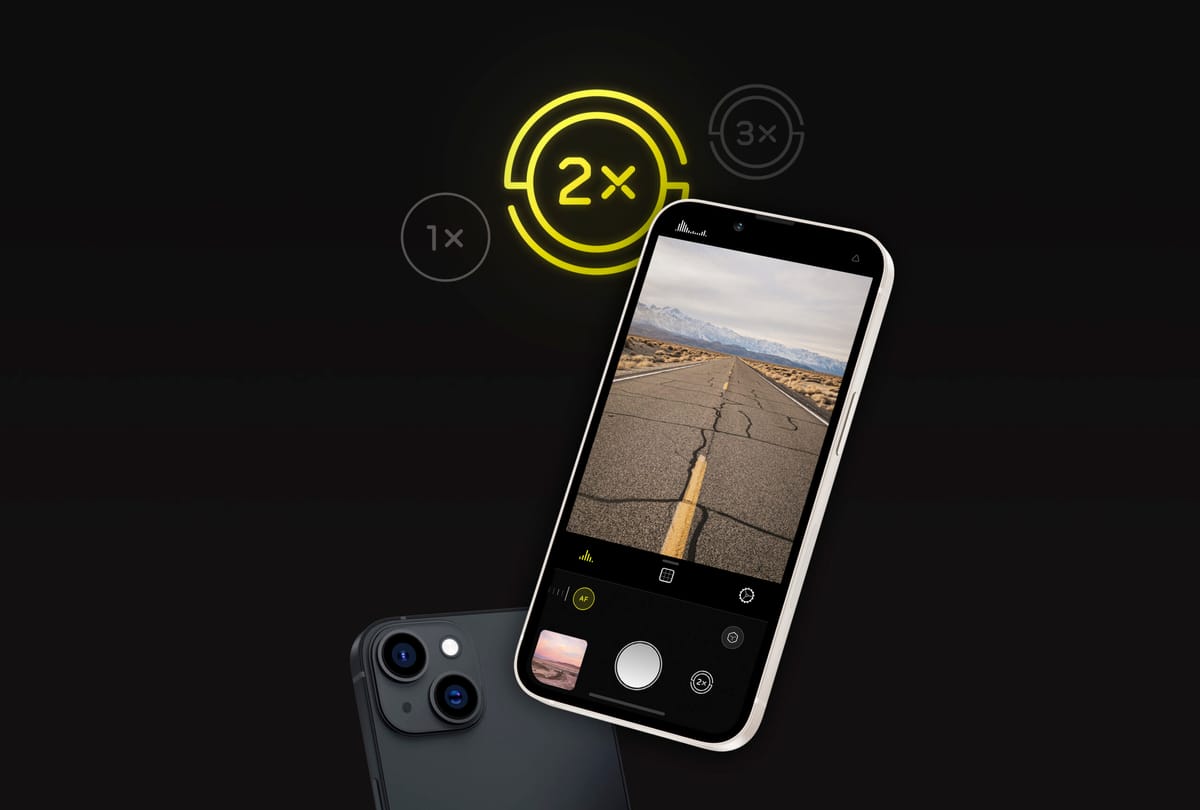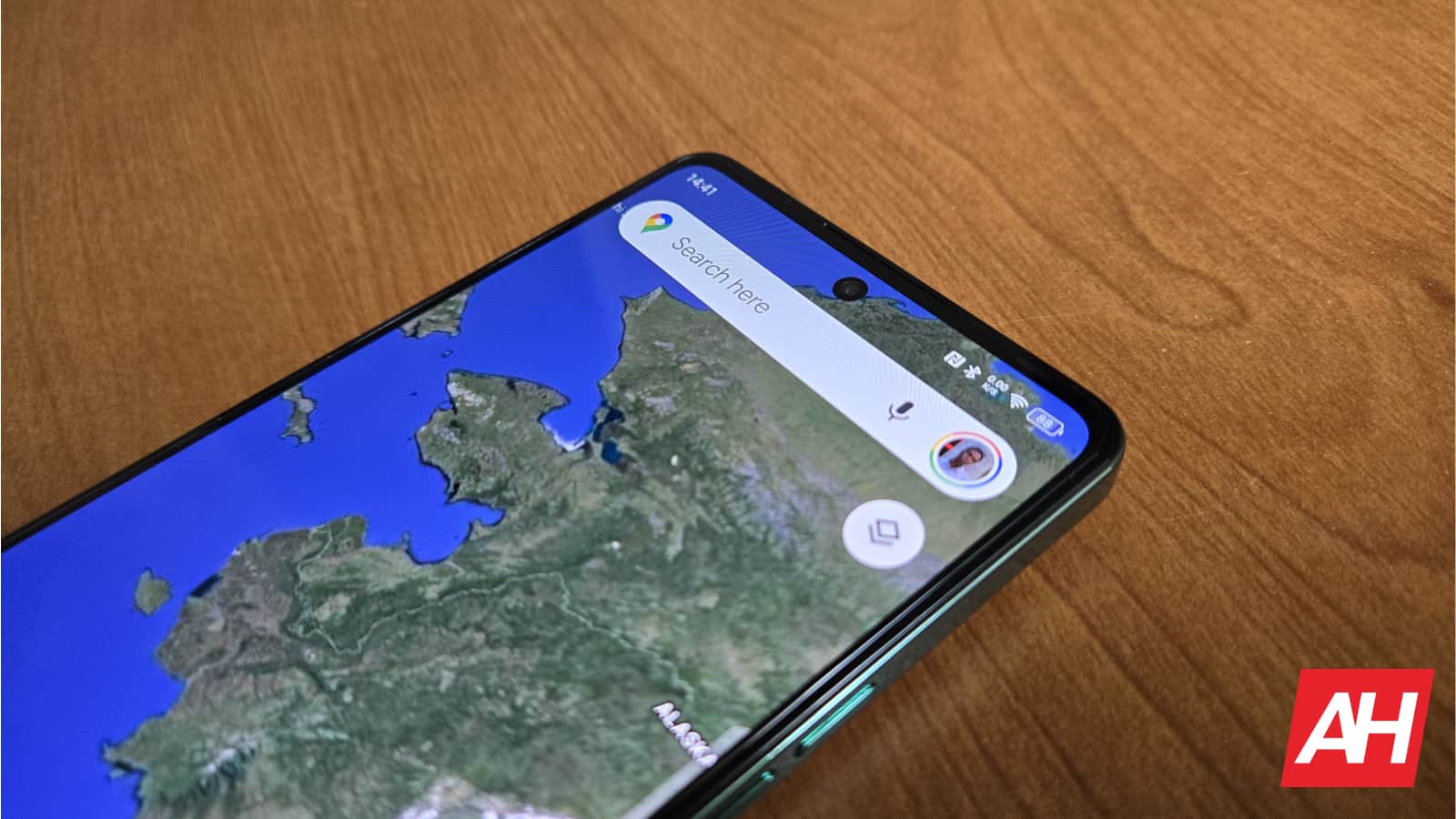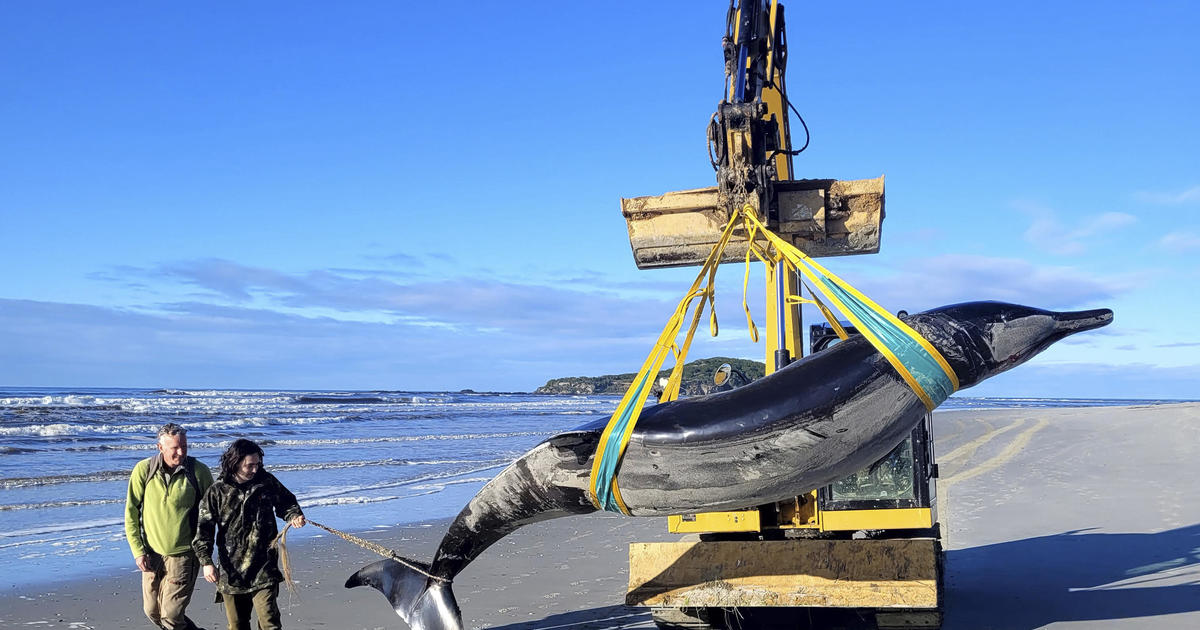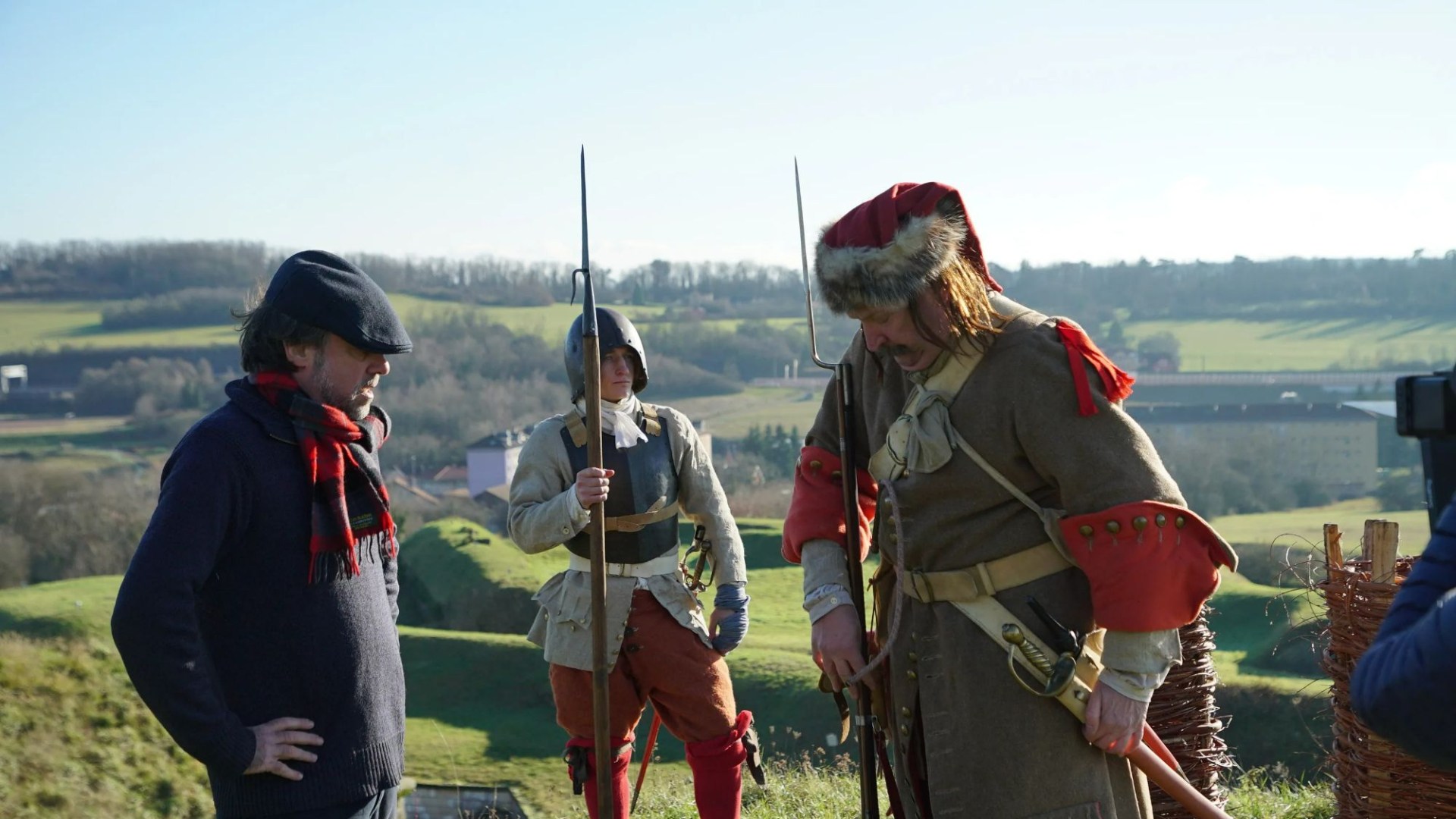Technology
What is CrowdStrike? Everything You Need to Know

In this video, we delve into what CrowdStrike is, how its Falcon software works, and the recent update incident that impacted millions of Windows machines.
Technology
Field Tested in the Galapagos

Normally we share updates through long articles, but writing about photography is like dancing about math. What if we share it in a video? (Spoiler: we are not launching a video app.) If you dig the new format, let us know in the video comments or through Halide@mastodon.social
Technology
Cold war spy satellites and AI detect ancient underground aqueducts


Holes at the top of this image are vertical shafts to underground aqueducts called qanats
Nazarij Buławka et al
Most of the ancient underground aqueducts that enabled humans to settle in the world’s hottest and driest regions have been lost over time. Now, archaeologists are rediscovering them by using artificial intelligence to analyse spy satellite images taken during the cold war.
The oldest known underground aqueducts that are found across much of North Africa and the Middle East are called qanats and are up to 3000 years old. They were designed to carry water from highland or mountain…
Technology
How generative AI changes consumer lifestyles

Host Andrew McDougall sits down with technology experts Jason Thomson and Thomas Slide to discuss the future of generative AI. What can brands do to connect with consumers using the latest generative AI technology? How will this change the way consumers look for information, and what is the next “big” breakthrough in this space? Listen to find out more.
Technology
This $75 million blockbuster was reportedly shot on an iPhone


The highly anticipated horror flick 28 Years Later was shot entirely on the iPhone 15, Wired claimed in a report on Thursday, noting that with a budget of $75 million, it’s is the biggest movie yet to use a smartphone for filming.
The main filming for the Danny Boyle movie finished up last month and the final product is expected to land in theaters in June 2025. Those working on set had reportedly been instructed to sign a non-disclosure agreement to ensure news didn’t leak about the use of the iPhone. It’s possible that Apple and the moviemakers had been planning a big reveal to highlight the powerful capabilities of the iPhone when it comes to capturing moving pictures, but Wired’s report may impact that plan.
It was first suggested that Boyle was using a smartphone for at least some of the shots for 28 Years Later after a photo of the movie set taken by a paparazzi in July revealed, on close inspection, a protective cage holding something that was most definitely not a regular movie camera but instead, quite possibly, a high-end smartphone.
Wired investigated further and received confirmation from several people linked to the movie that Boyle had indeed been using a number of iPhone 15 Pro Max handsets — connected to elaborate rigs — to film scenes for 28 Years Later.
Having a prominent moviemaker like Danny Boyle use an iPhone for a big-budget movie is a real boon for Apple, which sells a lot of its smartphones off the back of the handset’s strong reputation for producing excellent imagery.
Apple itself also showed off the phone’s ability to record footage for elaborate productions during its Scary Fast event last October in which introduced the new MacBook Pro and iMac with M3 chips. All of the presenters, locations, and drone footage in the online presentation were filmed using the iPhone 15 Pro Max, though as many reports noted at the time — and which also applies to 28 Years Later — the phone was supported by a plethora of advanced moviemaking equipment such as lighting, dollies, and cranes, and also had a highly experienced post-production team to craft the footage into something compelling. The results are astonishing for such a tiny device, so we’re eager to see what Boyle has managed to do with it.
Technology
Google funds FireSat launch to detect and track wildfires

Google has backed FireSat, a constellation of satellites intended to detect, track, and perhaps even prevent wildfires from spreading. The first satellite in the FireSat program is expected to launch early next year.
Google is backing the FireSat satellite launch
Google Maps and Search services have been alerting users about nearby wildfire boundaries since 2020. The search giant has been mapping the wildfires in detail ensuring users are aware of the potential danger. Google also sends notifications and instructions on how to stay safe.
Google has infused $13m into an initiative led by the Earth Fire Alliance that aims to “detect and track wildfires the size of a classroom within 20 minutes”. A blog post published this week details FireSat. Essentially, it is a new constellation of satellites to monitor, detect, and track early-stage wildfires.
In addition to financially backing FireSat, Google Research will also contribute to this project. The entire platform will have Artificial Intelligence (AI) to provide a better way to monitor and manage wildfires.
Google has indicated that the Google Research team will plug relevant data into Machine Learning (ML) technology. This would help develop AI-driven enhancements aimed at detecting wildfires when they are small.
How will FireSat help detect wildfires and save lives?
Wildfires are notoriously difficult to detect. Oftentimes, there are false alarms. Moreover, current-generation satellite imagery used for wildfire detection has low-resolution imagery and infrequent updates.
All these restrictions usually mean wildfires remain undetected until they become as large as football fields. Needless to say, such delays allow wildfires to rapidly expand, destroy habitats, and threaten nearby towns. Google and the FireSat constellation aim to bring down, or perhaps eliminate, the aforementioned limitations, and speed up detection.
The first FireSat satellite, which Google is helping launch, is expected to happen early next year. Fully deployed, this constellation should have 50 satellites in low-earth orbit.
The FireSat satellites are equipped with infrared sensors that detect small fires. Some reports suggest the constellation could eventually detect a fire as small as 5 by 5 meters or about the size of a classroom.
FireSat should be able to provide accurate and actionable information about the location, size, and intensity of early-stage wildfires. This early detection, coupled with real-time updates, could mean agencies can douse wildfires before they pose any serious threat.
Science & Environment
Creature that washed up on New Zealand beach may be world’s rarest whale — a spade-toothed whale

Wellington, New Zealand — Spade-toothed whales are the world’s rarest, with no live sightings ever recorded. No one knows how many there are, what they eat, or even where they live in the vast expanse of the southern Pacific Ocean. However, scientists in New Zealand may have finally caught a break.
The country’s conservation agency said Monday a creature that washed up on a South Island beach this month is believed to be a spade-toothed whale. The five-meter-long creature, a type of beaked whale, was identified after it washed ashore on Otago beach from its color patterns and the shape of its skull, beak and teeth
“We know very little, practically nothing” about the creatures, Hannah Hendriks, Marine Technical Advisor for the Department of Conservation, told The Associated Press. “This is going to lead to some amazing science and world-first information.”
If the cetacean is confirmed to be the elusive spade-toothed whale, it would be the first specimen found in a state that would permit scientists to dissect it, allowing them to map the relationship of the whale to the few others of the species found and learn what it eats and perhaps lead to clues about where they live.
Only six other spade-toothed whales have ever been pinpointed, and those found intact on New Zealand’s North Island beaches had been buried before DNA testing could verify their identification, Hendriks said, thwarting any chance to study them.
This time, the beached whale was quickly transported to cold storage and researchers will work with local Māori iwi (tribes) to plan how it will be examined, the conservation agency said.
New Zealand’s Indigenous people consider whales a taonga – a sacred treasure – of cultural significance. In April, Pacific Indigenous leaders signed a treaty recognizing whales as “legal persons,” although such a declaration is not reflected in the laws of participating nations.
Nothing is currently known about the whales’ habitat. The creatures deep-dive for food and likely surface so rarely that it has been impossible to narrow their location further than the southern Pacific Ocean, home to some of the world’s deepest ocean trenches, Hendriks said.
“It’s very hard to do research on marine mammals if you don’t see them at sea,” she said. “It’s a bit of a needle in a haystack. You don’t know where to look.”
The conservation agency said the genetic testing to confirm the whale’s identification could take months.
It took “many years and a mammoth amount of effort by researchers and local people” to identify the “incredibly cryptic” mammals, Kirsten Young, a senior lecturer at the University of Exeter who has studied spade-toothed whales, said in emailed remarks.
The fresh discovery “makes me wonder – how many are out in the deep ocean and how do they live?” Young said.
The first spade-toothed whale bones were found in 1872 on New Zealand’s Pitt Island. Another discovery was made at an offshore island in the 1950s, and the bones of a third were found on Chile’s Robinson Crusoe Island in 1986. DNA sequencing in 2002 proved that all three specimens were of the same species – and that it was one distinct from other beaked whales.
Researchers studying the mammal couldn’t confirm if the species went extinct. Then in 2010, two whole spade-toothed whales, both dead, washed up on a New Zealand beach. Firstly mistaken for one of New Zealand’s 13 other more common types of beaked whale, tissue samples – taken after they were buried – revealed them as the enigmatic species.
New Zealand is a whale-stranding hotspot, with more than 5,000 episodes recorded since 1840, according to the Department of Conservation.
-

 Sport15 hours ago
Sport15 hours agoJoshua vs Dubois: Chris Eubank Jr says ‘AJ’ could beat Tyson Fury and any other heavyweight in the world
-

 News2 days ago
News2 days agoYou’re a Hypocrite, And So Am I
-

 News16 hours ago
News16 hours agoIsrael strikes Lebanese targets as Hizbollah chief warns of ‘red lines’ crossed
-

 Sport14 hours ago
Sport14 hours agoUFC Edmonton fight card revealed, including Brandon Moreno vs. Amir Albazi headliner
-

 Science & Environment18 hours ago
Science & Environment18 hours ago‘Running of the bulls’ festival crowds move like charged particles
-

 Technology13 hours ago
Technology13 hours agoiPhone 15 Pro Max Camera Review: Depth and Reach
-

 Science & Environment18 hours ago
Science & Environment18 hours agoHow one theory ties together everything we know about the universe
-

 Science & Environment1 day ago
Science & Environment1 day agoSunlight-trapping device can generate temperatures over 1000°C
-

 News13 hours ago
News13 hours agoBrian Tyree Henry on voicing young Megatron, his love for villain roles
-

 Science & Environment1 day ago
Science & Environment1 day agoQuantum time travel: The experiment to ‘send a particle into the past’
-

 CryptoCurrency15 hours ago
CryptoCurrency15 hours ago2 auditors miss $27M Penpie flaw, Pythia’s ‘claim rewards’ bug: Crypto-Sec
-

 CryptoCurrency15 hours ago
CryptoCurrency15 hours agoBitcoin miners steamrolled after electricity thefts, exchange ‘closure’ scam: Asia Express
-

 CryptoCurrency15 hours ago
CryptoCurrency15 hours agoCardano founder to meet Argentina president Javier Milei
-

 CryptoCurrency15 hours ago
CryptoCurrency15 hours agoDorsey’s ‘marketplace of algorithms’ could fix social media… so why hasn’t it?
-

 CryptoCurrency15 hours ago
CryptoCurrency15 hours agoLow users, sex predators kill Korean metaverses, 3AC sues Terra: Asia Express
-
Business14 hours ago
How Labour donor’s largesse tarnished government’s squeaky clean image
-

 Science & Environment22 hours ago
Science & Environment22 hours agoQuantum ‘supersolid’ matter stirred using magnets
-
News15 hours ago
Freed Between the Lines: Banned Books Week
-

 MMA14 hours ago
MMA14 hours agoUFC’s Cory Sandhagen says Deiveson Figueiredo turned down fight offer
-

 CryptoCurrency14 hours ago
CryptoCurrency14 hours agoEthereum is a 'contrarian bet' into 2025, says Bitwise exec
-

 Science & Environment18 hours ago
Science & Environment18 hours agoHow to wrap your head around the most mind-bending theories of reality
-

 Technology2 days ago
Technology2 days agoCan technology fix the ‘broken’ concert ticketing system?
-

 Fashion Models14 hours ago
Fashion Models14 hours agoMiranda Kerr nude
-

 Fashion Models14 hours ago
Fashion Models14 hours ago“Playmate of the Year” magazine covers of Playboy from 1971–1980
-

 Science & Environment22 hours ago
Science & Environment22 hours agoA new kind of experiment at the Large Hadron Collider could unravel quantum reality
-

 Science & Environment21 hours ago
Science & Environment21 hours agoHow Peter Higgs revealed the forces that hold the universe together
-

 Science & Environment18 hours ago
Science & Environment18 hours agoRethinking space and time could let us do away with dark matter
-

 Science & Environment15 hours ago
Science & Environment15 hours agoWe may have spotted a parallel universe going backwards in time
-

 CryptoCurrency15 hours ago
CryptoCurrency15 hours agoArthur Hayes’ ‘sub $50K’ Bitcoin call, Mt. Gox CEO’s new exchange, and more: Hodler’s Digest, Sept. 1 – 7
-

 CryptoCurrency15 hours ago
CryptoCurrency15 hours agoTreason in Taiwan paid in Tether, East’s crypto exchange resurgence: Asia Express
-

 CryptoCurrency15 hours ago
CryptoCurrency15 hours agoLeaked Chainalysis video suggests Monero transactions may be traceable
-

 CryptoCurrency15 hours ago
CryptoCurrency15 hours agoJourneys: Robby Yung on Animoca’s Web3 investments, TON and the Mocaverse
-

 CryptoCurrency15 hours ago
CryptoCurrency15 hours agoLouisiana takes first crypto payment over Bitcoin Lightning
-

 CryptoCurrency15 hours ago
CryptoCurrency15 hours agoAre there ‘too many’ blockchains for gaming? Sui’s randomness feature: Web3 Gamer
-

 CryptoCurrency15 hours ago
CryptoCurrency15 hours agoCrypto whales like Humpy are gaming DAO votes — but there are solutions
-

 CryptoCurrency15 hours ago
CryptoCurrency15 hours agoHelp! My parents are addicted to Pi Network crypto tapper
-

 CryptoCurrency15 hours ago
CryptoCurrency15 hours ago$12.1M fraud suspect with ‘new face’ arrested, crypto scam boiler rooms busted: Asia Express
-

 CryptoCurrency15 hours ago
CryptoCurrency15 hours ago‘Everything feels like it’s going to shit’: Peter McCormack reveals new podcast
-

 Science & Environment18 hours ago
Science & Environment18 hours agoWhy we need to invoke philosophy to judge bizarre concepts in science
-

 Science & Environment18 hours ago
Science & Environment18 hours agoFuture of fusion: How the UK’s JET reactor paved the way for ITER
-

 CryptoCurrency15 hours ago
CryptoCurrency15 hours agoSEC sues ‘fake’ crypto exchanges in first action on pig butchering scams
-

 CryptoCurrency15 hours ago
CryptoCurrency15 hours agoFed rate cut may be politically motivated, will increase inflation: Arthur Hayes
-

 CryptoCurrency15 hours ago
CryptoCurrency15 hours agoDecentraland X account hacked, phishing scam targets MANA airdrop
-

 CryptoCurrency15 hours ago
CryptoCurrency15 hours agoCZ and Binance face new lawsuit, RFK Jr suspends campaign, and more: Hodler’s Digest Aug. 18 – 24
-

 CryptoCurrency15 hours ago
CryptoCurrency15 hours agoCertiK Ventures discloses $45M investment plan to boost Web3
-

 CryptoCurrency15 hours ago
CryptoCurrency15 hours agoMemecoins not the ‘right move’ for celebs, but DApps might be — Skale Labs CMO
-

 CryptoCurrency15 hours ago
CryptoCurrency15 hours agoTelegram bot Banana Gun’s users drained of over $1.9M
-

 CryptoCurrency15 hours ago
CryptoCurrency15 hours agoDZ Bank partners with Boerse Stuttgart for crypto trading
-

 CryptoCurrency15 hours ago
CryptoCurrency15 hours agoRedStone integrates first oracle price feeds on TON blockchain
-

 CryptoCurrency15 hours ago
CryptoCurrency15 hours agoBitcoin bulls target $64K BTC price hurdle as US stocks eye new record
-

 CryptoCurrency15 hours ago
CryptoCurrency15 hours agoSEC asks court for four months to produce documents for Coinbase
-

 CryptoCurrency15 hours ago
CryptoCurrency15 hours ago‘No matter how bad it gets, there’s a lot going on with NFTs’: 24 Hours of Art, NFT Creator
-

 CryptoCurrency14 hours ago
CryptoCurrency14 hours agoBlockdaemon mulls 2026 IPO: Report
-
Business14 hours ago
Thames Water seeks extension on debt terms to avoid renationalisation
-
Politics14 hours ago
The Guardian view on 10 Downing Street: Labour risks losing the plot | Editorial
-

 Politics14 hours ago
Politics14 hours agoI’m in control, says Keir Starmer after Sue Gray pay leaks
-
Politics14 hours ago
‘Appalling’ rows over Sue Gray must stop, senior ministers say | Sue Gray
-
Business13 hours ago
UK hospitals with potentially dangerous concrete to be redeveloped
-
Business13 hours ago
Axel Springer top team close to making eight times their money in KKR deal
-

 News13 hours ago
News13 hours ago“Beast Games” contestants sue MrBeast’s production company over “chronic mistreatment”
-

 News13 hours ago
News13 hours agoSean “Diddy” Combs denied bail again in federal sex trafficking case
-

 News13 hours ago
News13 hours agoSean “Diddy” Combs denied bail again in federal sex trafficking case in New York
-

 News13 hours ago
News13 hours agoBrian Tyree Henry on his love for playing villains ahead of “Transformers One” release
-

 News13 hours ago
News13 hours agoBrian Tyree Henry on voicing young Megatron, his love for villain roles
-

 CryptoCurrency12 hours ago
CryptoCurrency12 hours agoCoinbase’s cbBTC surges to third-largest wrapped BTC token in just one week
-

 Technology4 days ago
Technology4 days agoYouTube restricts teenager access to fitness videos
-

 News17 hours ago
News17 hours agoChurch same-sex split affecting bishop appointments
-

 Politics2 days ago
Politics2 days agoTrump says he will meet with Indian Prime Minister Narendra Modi next week
-

 Politics1 day ago
Politics1 day agoWhat is the House of Lords, how does it work and how is it changing?
-

 Politics1 day ago
Politics1 day agoKeir Starmer facing flashpoints with the trade unions
-

 Health & fitness2 days ago
Health & fitness2 days agoWhy you should take a cheat day from your diet, and how many calories to eat
-

 Technology16 hours ago
Technology16 hours agoFivetran targets data security by adding Hybrid Deployment
-

 News4 days ago
News4 days agoNathan Simpson appears in court over murder of Rachelle Simpson
-

 Science & Environment2 days ago
Science & Environment2 days agoElon Musk’s SpaceX contracted to destroy retired space station
-

 Science & Environment22 hours ago
Science & Environment22 hours agoSingle atoms captured morphing into quantum waves in startling image
-

 Business3 days ago
Business3 days agoGuardian in talks to sell world’s oldest Sunday paper
-

 MMA14 hours ago
MMA14 hours agoDiego Lopes declines Movsar Evloev’s request to step in at UFC 307
-

 Football14 hours ago
Football14 hours agoNiamh Charles: Chelsea defender has successful shoulder surgery
-

 Football14 hours ago
Football14 hours agoSlot's midfield tweak key to Liverpool victory in Milan
-

 Science & Environment18 hours ago
Science & Environment18 hours agoHyperelastic gel is one of the stretchiest materials known to science
-

 News3 days ago
News3 days agoDid the Pandemic Break Our Brains?
-

 Health & fitness2 days ago
Health & fitness2 days ago11 reasons why you should stop your fizzy drink habit in 2022
-

 Politics13 hours ago
Politics13 hours agoLabour MP urges UK government to nationalise Grangemouth refinery
-

 Technology2 days ago
Technology2 days agoWhat will future aerial dogfights look like?
-

 Science & Environment16 hours ago
Science & Environment16 hours agoOdd quantum property may let us chill things closer to absolute zero
-

 Science & Environment23 hours ago
Science & Environment23 hours agoQuantum forces used to automatically assemble tiny device
-

 Entertainment12 hours ago
Entertainment12 hours ago“Jimmy Carter 100” concert celebrates former president’s 100th birthday
-

 Business3 days ago
Business3 days agoDangers of being a FOMO customer as rates fall
-

 CryptoCurrency15 hours ago
CryptoCurrency15 hours agoSEC settles with Rari Capital over DeFi pools, unregistered broker activity
-

 News13 hours ago
News13 hours agoJoe Posnanski revisits iconic football moments in new book, “Why We Love Football”
-

 Health & fitness2 days ago
Health & fitness2 days agoHow to adopt mindful drinking in 2022
-

 Health & fitness2 days ago
Health & fitness2 days agoWhat 10 days of a clean eating plan actually does to your body and why to adopt this diet in 2022
-

 Health & fitness2 days ago
Health & fitness2 days agoWhen Britons need GoFundMe to pay for surgery, it’s clear the NHS backlog is a political time bomb
-

 Health & fitness2 days ago
Health & fitness2 days agoThe maps that could hold the secret to curing cancer
-

 Business3 days ago
Business3 days ago‘I borrowed £44,000 for university and now owe £54,000’
-

 News4 days ago
News4 days agoCan the middle powers save multilateral trade?
-
Health & fitness2 days ago
Covid v flu v cold and how to tell the difference between symptoms this winter
-

 News3 days ago
News3 days agoAs Democrats fold to GOP on border policy, immigrants pay the price
-

 Science & Environment1 day ago
Science & Environment1 day agoPhysicists determined the paper most likely to give you a paper cut
-

 News4 days ago
News4 days agoBrits’ favourite history periods revealed – does yours make the list?



You must be logged in to post a comment Login